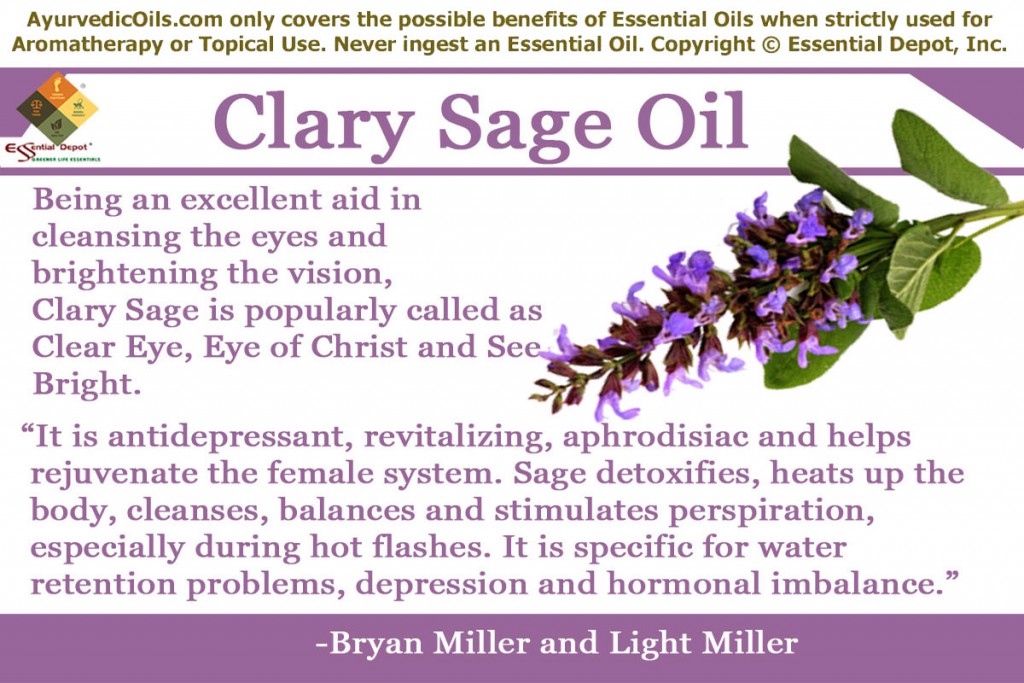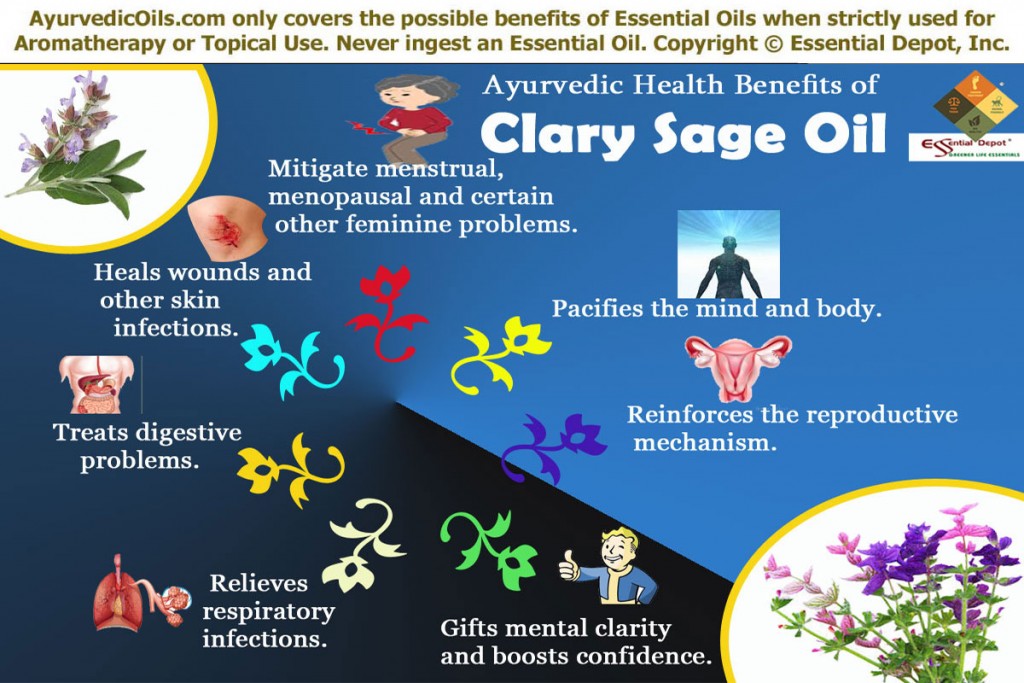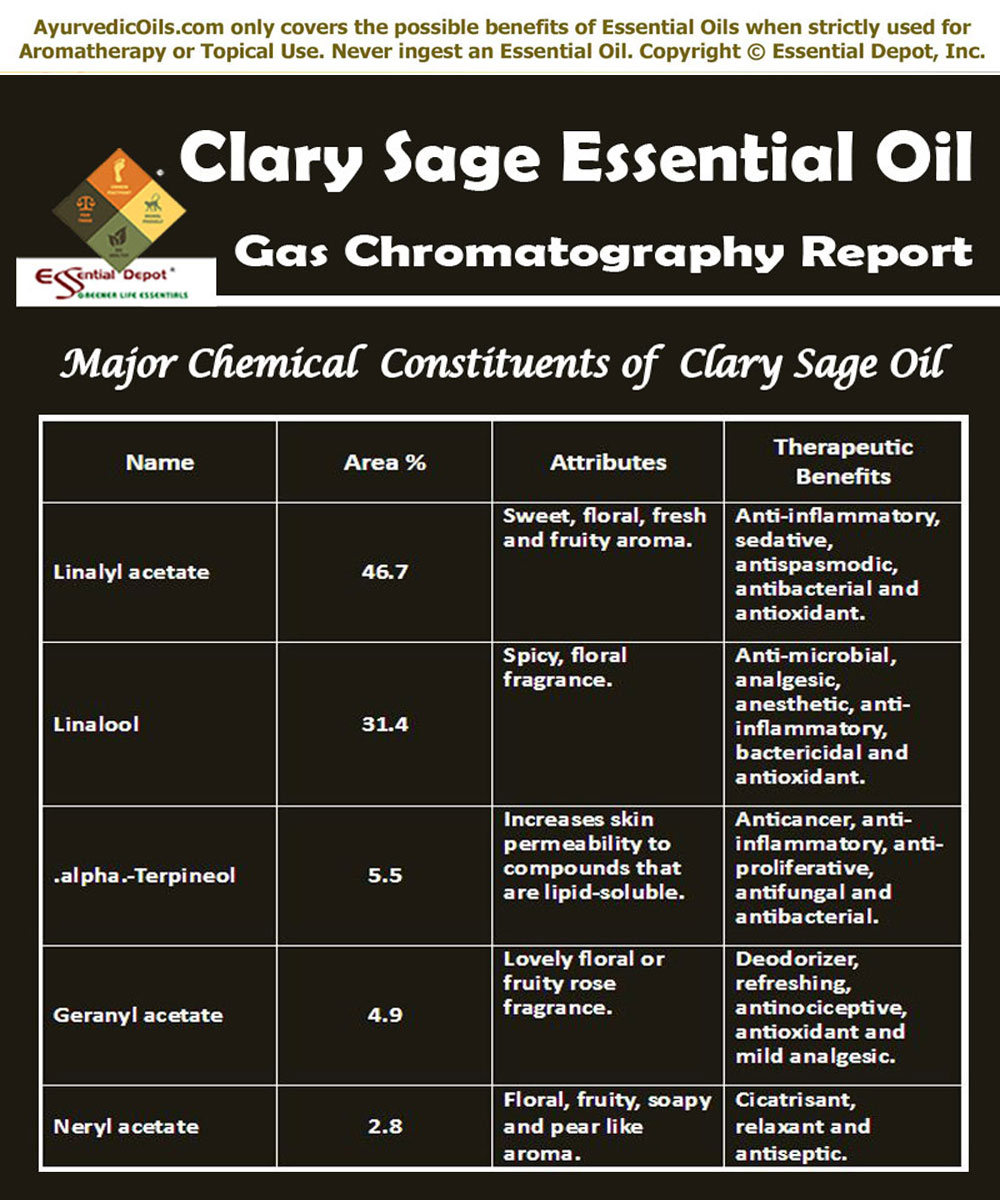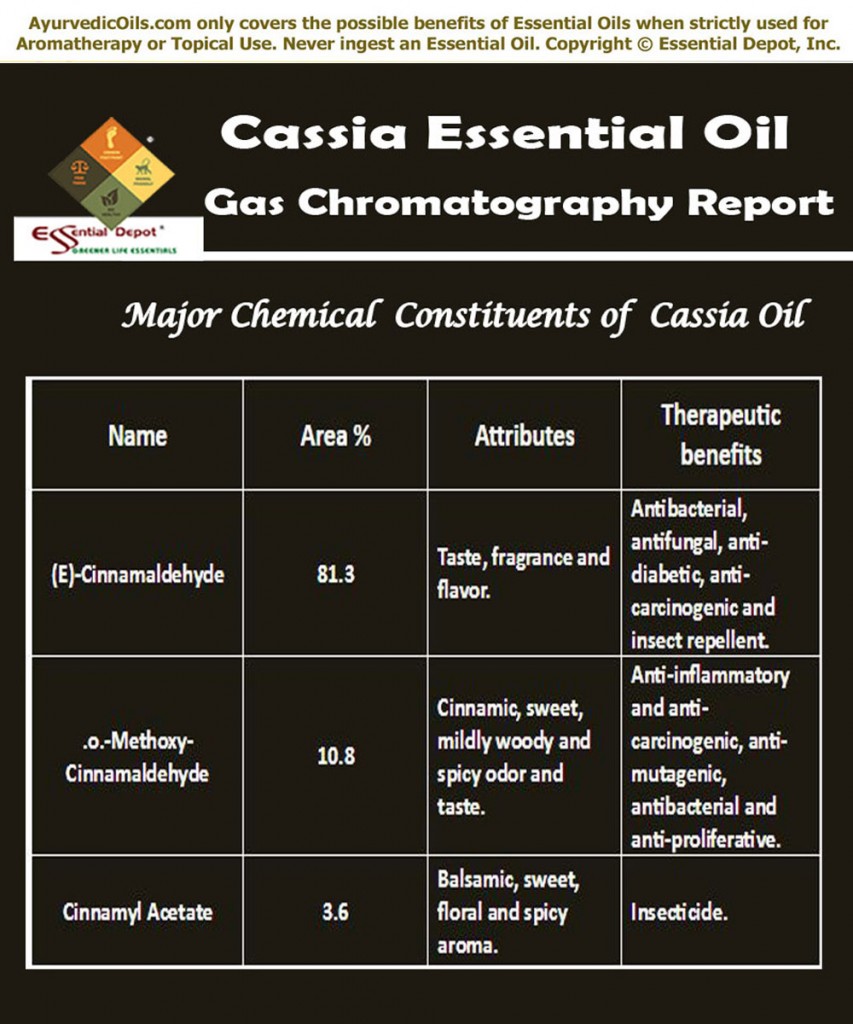 ‘Clear Eye, Eye of Christ and See Bright’ are the popular names of Clary Sage herb for its excellent remedial properties that aid in cleansing the eyes and brightening the vision.
‘Clear Eye, Eye of Christ and See Bright’ are the popular names of Clary Sage herb for its excellent remedial properties that aid in cleansing the eyes and brightening the vision.
With its rich content of natural phyto-estrogens, this herb and its essential oil steam distilled from the leaves and flowers of the perennial plant Salvia sclarea, have been used since the primordial times for alleviating female problems like dysmennorhea or pain during menses, menopausal difficulties and pain during pregnancy and delivery.
Clary Sage herb has been used in Ayurveda as a tonic for augmenting physical, psychological and emotional strength for thousands of years. The Ayurveda and Aromatherapy book by Bryan and Light Miller quotes Clary Sage oil as, “It is antidepressant, revitalizing, aphrodisiac and helps rejuvenate the female system.
Sage detoxifies, heats up the body, cleanses, balances and stimulates perspiration, especially during hot flashes. It is specific for water retention problems, depression and hormonal imbalance.”
Purchase Clary Sage Essential Oil – Retail – 4 oz – CLICK HERE
Purchase Clary Sage Essential Oil – Wholesale – CLICK HERE
Purchase Clary Sage Hydrosol – 1 Litre – CLICK HERE
Historical uses and importance of Clary Sage:
The name Clary Sage is of Latin origin from the word ‘Clarus’ means clear and the tea prepared from the leaves, flowers and seeds of this plant was trusted to grant clear eyesight and mental clarity. Indigenous to the Northern Mediterranean region along with Central Asia and North Africa, Clary Sage is cultivated widely in Russia and France for the essential oil production.
Clary Sage was held high since the primeval period as a panacea for many illnesses and was believed to have the potential for gifting immortality to mankind. The remedial use of this plant dates back to the 4th century BC in the herbal writings of Theophrastus, Pliny The Elder and Dioscorides. It is said to shed light on one’s instinct and pave way for having a clear vision on the future.
The Jamaican folklore medicine used Clary Sage herb for cooling and cleansing the eyes, treating ulcers and inflammation. It was used in the Ayurvedic medicine for premenstrual syndrome (PMS), insomnia, menopausal problems, fear, anxiety and delayed menstruation. This oil has been used in Oriental medicine for strengthening and circulating the vital force of the body known as ‘Qi’ or ‘Chi’.
The seeds of this plant have a mucilaginous cover that was used in ancient herbal medicine for removing the foreign object in one’s eyes and it was Nicholas Culpeper, the renowned herbalist who named Clary Sage as ‘Clear Eye’ in his book Complete Herbal (1653).
Clary Sage is a key ingredient in many European products like the Elderflowers which still uses this herb as a prominent flavoring in Italian vermouth and Muscatel wine and liquer. It is also used as a favorite flavoring ingredient for cigarettes for R.K. Reynolds and certain other famous tobacco companies.
Chemical constituents or Gas Chromatography Report (GC) of Clary Sage oil:
According to the Gas chromatography report, Clary Sage oil constitutes of 15 chemical components that contribute to its fragrance, therapeutic attributes, consistency and quality of this oil. Of which, Linalyl acetate contributes to the highest proportion of Clary Sage oil constituents with about 46.7% of its total composition.
Just click on:
I believe that this must certainly help you in getting to know the exclusive information about these prime chemical constituents of Clary Sage oil.
The table crafted below clearly depicts the unique nature and contributions of these biochemical constituents to the healing magnificence of Clary Sage essential oil.
Therapeutic properties of Clary Sage essential oil:
The remedial properties of this oil are anti-inflammatory, relaxant, mental stimulant, carminative, nervine, deodorant, aphrodisiac, euphoric, emmenagogue, antispasmodic, antidepressant, antiseptic, hypotensive, anti-convulsive, nerve tonic, bactericidal, uterine, astringent and sedative.
Ayurvedic health benefits of Clary Sage essential oil:
Devotedly called as the ‘Mother of all healing sciences’, Ayurveda is a 5000 year old healing methodology and is known as the oldest of all healing systems on earth.
Being a pioneer to almost all the medicinal practices in the world, Ayurveda preaches the techniques for leading a ‘Disciplined life’ and this discipline indicates a systematic life with a synchronized lifestyle, balanced diet, simple physical exercises, meditation, yoga and prayers, all of which are a part of the Ayurvedic routine.
The elegance of Ayurveda lies in its respect and reception of Nature as the sole reason for the wellness of humanity. When our life is in harmony with nature, we are privileged to live a healthy and enhanced living with increased life span free of illnesses. Being a part of nature, human beings are also made up of the five vital elements of nature namely earth, water, fire, air and space.
Ayurveda trusts that every individual has a unique constitution made up of three dynamic energies of nature known as doshas. These are a representation of the five elements known as Panchaboothas.
Vata is the elemental force of air and space. Pitta is the fundamental energy of fire and water and Kapha is a basic force of earth and water. Ayurvedic philosophy states that the personality, behavior, physical, mental and emotional set up of a person is determined by the natural presence of these three doshas.
Balance between these doshas indicates health and harmony with nature and imbalances due to change in lifestyle and climatic conditions cause doshic imbalances leading to illness.
Ayurvedic remedies like herbs, essential oils, Ayurvedic massaging techniques, Ayurvedic routine, yoga and meditation practices treat diseases by correcting the imbalances of doshas after analyzing the individual constitution and root cause of a sickness. By this way it treats the disease initially and aims in preventing it in the future and focusing on healthy aging and longevity.
Vata is characterized by dry, quick, cold and irregular nature and is treated with essential oils and herbs of warming, sweet and grounding nature. Kapha is identified with heavy, slow and cool nature and is treated with cleansing, stimulating and warming remedies. Pitta is recognized with sharp, hot and forceful nature and is balanced with calming, soothing and cooling Ayurvedic remedies.
Clary Sage essential oil is an all-rounder that is known to treat all the three doshic imbalances and strike absolute balance when there is vitiation of vata, pitta and kapha energies.
The Ayurvedic health benefits of Clary Sage essential oil are:
 1. Mitigate menstrual, menopausal and certain other feminine problems:
1. Mitigate menstrual, menopausal and certain other feminine problems:
Most of the problems associated with menstrual and menopausal conditions are caused due to hormonal imbalances, especially the female hormone estrogen. Certain studies indicate that presence of sclareol constituent in Clary Sage oil may provoke an ‘estrogen-like effect’ in the body that helps in treating womanly problems related to hormonal reactions.
Light Miller and Bryan Miller in their book Ayurveda and Aromatherapy say that Clary Sage essential oil is beneficial for all the three doshas and has rejuvenative and female-immune stimulating qualities that aids in building tissues in the uterus and helps in relieving uterine pain and cramps.
Massaging your lower abdomen, thighs and around your reproductive organs with 3 drops of Clary Sage oil mixed 2 ml of coconut oil can be of great assistance in relieving menstrual pain (dysmennorhea), irregular or blocked menstruation with its emmenagogue properties, treat hot flashes and mood swings associated with menopause.
You can mix 5 drops of this oil with 3 ml of virgin olive oil and massage it gently on the feet and palms of the pregnant women before childbirth for relaxing the stretched out muscles, granting mental strength, calming the tensed nerves and lessening the pain during labor.
A 2013 study on Differential Effects on Blood Pressure in Female Patients with Urinary Incontinence Undergoing Urodynamic Examination of Salvia sclarea or Lavandula angustifolia proved that “lavender oil inhalation may be inappropriate in lowering stress during urodynamic examinations, despite its antistress effects, while clary oil inhalation may be useful in inducing relaxation in female urinary incontinence patients undergoing urodynamic assessments.”
2. Pacifies the mind and body:
Clary Sage essential oil has a positive and reviving effect on the pituitary gland of the brain, which is responsible controlling stress, growth, blood pressure, pain relief and has an impact on the behavioral pattern as well. Inhaling the warm, sweet and soothing aroma of Clary Sage oil added to a diffuser, burner or vaporizer helps in alleviating stress, mood swings, tension, anxiety, hopelessness, postpartum depression and uncertainty.
Adding 3 to 4 drops of Clary Sage oil in bath before going to bed can assist in relaxing the nerves and muscles helping in the treatment of fatigue, restlessness, nervous tension and grant peaceful sleep at night. 1 drop of Clary Sage oil added to your pillows or to a tissue placed near your pillow can help in putting an end to your horror dreams or feelings of insecurity by promoting farsighted dreams and presenting you with a euphoric state of mind.
3. Reinforces the reproductive mechanism:
The effect of Clary Sage oil on influencing the reproductive mechanism both in men and women is again related to its enhanced action on the pituitary gland, the pea sized endocrine gland in the brain. Pituitary gland secretes the hormones responsible for uterine contractions during childbirth (release of oxytocin hormones), functions of the sex organs in both male and female, metabolism (the process of converting food into energy), regulation of body temperature and breast milk production.
Massaging your body with 20 drops of Clary Sage oil mixed with 10 ml of jojoba oil along with adding 2 drops of Clary Sage oil to your bathing water and 3 drops in vaporizer or burner at night can help in numerous ways for activating the pituitary gland and stimulate the secretion of hormones responsible for reproductive problems like impotence, frigidity, infertility, loss of sexual interest, premature ejaculation and erectile dysfunction.
4. Gifts mental clarity and boosts confidence:
Only a relaxed and calm mind can help in progressive moves and visionary thinking. Clary Sage essential oil stimulates the root chakra and the sacral chakra responsible for endurance and confidence. 2 drops of Clary Sage oil added to your vaporizer, burner or handkerchief can assist in influencing positive thoughts, grant mental clarity, clear confusions and chaos, boost creativity and confidence and induce spiritual feelings naturally.
5. Relieves respiratory infections:
This oil have been used since the ancient times for treating asthma, bronchitis, sore throat, cough and certain other respiratory problems. The positive effects of Clary Sage oil on the respiratory system is mainly because of its mucilaginous produce. The working of this mechanism is that mucilages envelope the mucous membranes and thwarts the pain and irritation of the nerve endings.
Using 2 drops of Clary Sage oil in steam inhalation followed by 2 drops of this oil added to vaporizing ointment and massaged soothingly on your chest, back and throat can be of great assistance in treating spasmodic coughs, respiratory spasms, expelling the phlegm and mucous deposits in the bronchial and nasal passages and soothes the respiratory tract.
6. Treats digestive problems:
Clary Sage oil has carminative and stomachic properties that support in promoting proper digestion, expelling gas in the stomach and intestines, stimulating the secretion of digestive enzymes, acids and gastric juices responsible for metabolic functions. This working can again be attributed to its encouraging effect on the pituitary gland, accountable for secretion of hormones responsible for metabolic functions.
Dilute 3 drops of Clary Sage oil in bath or massage your abdomen with 4 drops of this oil mixed with 2 ml of sesame oil for curing stomach pain, flatulence, spasmodic cholera, ulcer, cramping, abdominal discomfort, gastrointestinal problems and for regulating the bowel movements.
7. Heals wounds and other skin infections:
Clary Sage essential oil can be your best friend in maintaining youthful and adorable skin. This oil has excellent antiseptic and antibacterial properties that heal wounds speedily, eliminate toxic substances in the body causing acne and blemishes, discard bacteria and other destructive micro-organisms that ruin the skin health by affecting the healthy cellular structure.
Gently massaging your skin with 3 drops of Clary Sage oil mixed with 2 ml of almond oil can work wonders on your skin by retaining the natural moisture, purging the excess oil deposits in the skin, toning the skin, reducing wrinkles and skin inflammation (due to the presence of linalyl acetate) and nurturing its suppleness.
Also helpful in: Clay Sage essential oil is also an excellent natural remedy for treating hypertension, hysteria, nervous convulsions, body odor, uterine tumors and high cholesterol.
Disclaimer:
This article is only for educational purpose and is not meant to diagnose or replace any professional medical advice or prescribed medicines. Do not use essential oils internally without the guidance of your Ayurvedic practitioner, who can grant the best expert consultation in choosing the right essential oils for your medical condition and unique individual constitution.
Ensure that you always use essential oils for topical use only, in a diluted form as pure and organic essential oils are highly concentrated substances and a skin patch test is advisable if you are using essential oils for the first time. Do not use this oil in the first and second trimester of pregnancy.
The MSDS (Material Safety Data Sheet) of Clary Sage oil is readily available for your enhanced safety and better usage.
Gas Chromatography Report (GC analysis) of Clary Sage oil.
Clary Sage Oil – Possible Skin Issues:
Greener Life Diamond – Bio-Healthy Score => 3 – Possible Skin Issues:
See => http://www.essentialdepot.com/GreenerLifeDiamond.html
The essential of oil of Clary Sage is expressed as non-toxic and exhibits mild skin irritation. Few studies have witnessed the moderate irritating effect of Clary Sage oil on rabbit skin. With a regulatory status of ‘Generally Recognized As Safe (GRAS)’authorized by the FDA (U.S. Food and Drug Administration), Clary Sage oil is safe on skin when blended with appropriate carrier oils.
The safe level of dilution for Clary Sage oil is 0.25 % according to Robert Tisserand and Rodney Young in their book, Essential oil safety. In the rodent studies, it has been proved that Clary Sage oil has the greater effect of causing motor (cognitive function) impairment and sedation, thus the excess use of this oil might end up in dizziness, headache and lowering the level of concentration (especially during the use in Aromatherapy massage).
For this reason, it is recommended to avoid the use of Clary Sage oil while you’re taking alcohol or any other narcotic drugs. This oil also has the ability to potentially influence the Limbic system, especially the pituitary gland and thalamus.
Clary Sage is also said to contain hypotensive (decreasing blood pressure) properties and is advised to avoid the use of this oil if you have low blood pressure.
The most popular attribute of Clary sage oil is its estrogenic effect and is not an estrogen mimic. The presence of the sclareol, which has an estrogen-like structure is responsible for this effect and supports in the treatment of menstrual conditions. It binds with estrogen receptor sites, blocking the activity of the system’s own estrogens, ending up in the lessening of estrogenic action.
The use of Clary Sage oil, especially during the early stages of pregnancy is highly recommended as it may cause uterine contractions and stimulate menstrual flow. Clary Sage oil is also used by nursing mothers to stop lactation so do not use Clary Sage oil if you are breastfeeding as it has an anti-galactogogue property.
Never ingest essential oils and remember to dilute in suitable carrier oils before dermal application, as pure essential oils are highly concentrated liquids and might cause adverse effects in your system. This pertains only for products engaged in topical use and is not valid for wash-off products like soaps, shampoos and other bathing varieties.
Reference Links Substantiating the Possible Skin Issues of Clary Sage Oil:
- Essential Oil Safety: A Guide for Health Care Professionals By Robert Tisserand, Rodney Young
- Leung’s Encyclopedia of Common Natural Ingredients, used in Food, Drugs and Cosmetics by Ikhlas A. Khan and Ehab A. Abourashed.
- American Herbal Products Association’s Botanical Safety Handbook, Second Edition by Zoe Gardner, Michael McGuffin
- Is Clary Sage oil Estrogenic? by Robert Tisserand
- Clary Sage oil by Mercola.com
- Randomized controlled trial for Salvia sclarea or Lavandula angustifolia: differential effects on blood pressure in female patients with urinary incontinence undergoing urodynamic examination by the Department of Nursing Science, Korea University published in the Journal of Alternative and Complementary Medicine
- The role of essential oils in the treatment and management of Attention Deficit Hyperactive Disorder by Heather Godfrey, published in the International Journal of Aromatherapy
Thought for the day:
Hope is the only bee that makes honey without flowers. -Robert Green Ingersoll
Suggested Reading:
- Clary Sage Essential Oil (Aromatherapy) by Miriam Kinai
- Mind Body Soul Aromatherapy by Rosa C Murphy M.Ed.
- How to Use Clary Sage Essential Oil (Aromatherapy) by Miriam Kinai
- Aromatherapy and Massage for Mother and Baby by Allison England R.N.
- Aromatherapy for Healing the Spirit: Restoring Emotional and Mental Balance with Essential Oils by Gabriel Mojay
Reference Links:
- Salvia sclarea by Wikipedia
- Clary Sage: Peaceful Rejuvenation by Vedic Society
- Ayurveda and Aromatherapy by Light Miller and Bryan Miller
- 38+ Benefits and Uses for Clary Sage Oil by Sustainable Baby Steps
- Randomized Controlled Trial for Salvia sclarea or Lavandula angustifolia: Differential Effects on Blood Pressure in Female Patients with Urinary Incontinence Undergoing Urodynamic Examination submitted to the Department of Basic Nursing Science, Korea University, published in the Journal of Alternative and Complementary Medicine

Your resource for quality Essential Oils. Every batch is
GC tested to ensure purity and authenticity.








